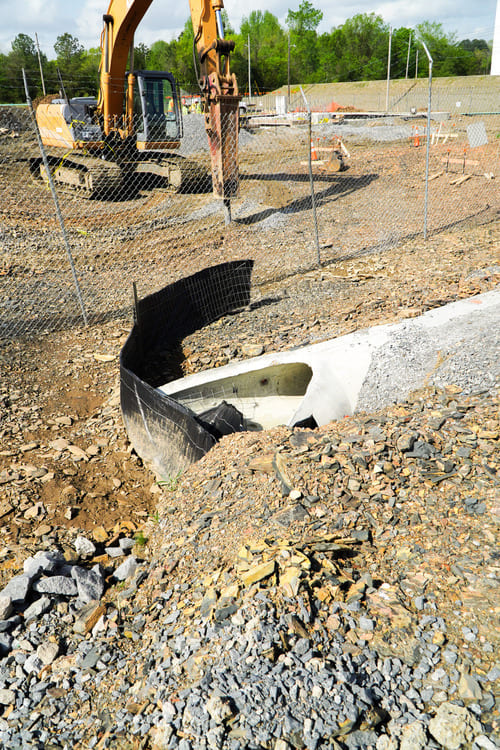It goes without saying that the foundation is perhaps the very most important part of any construction project. The foundation supports the entirety of any structure and transfers the weight of it to the underlying soil or bedrock.
Laying a solid foundation allows construction workers to continue building a high-quality structure that’s sure to last for many years to come– and it avoids future maintenance or repair headaches, too.
What the average person might not know, however, is that one size does not fit all when it comes to foundations. In fact, there are several different types of foundations that might be utilized within various construction projects– it all just depends on the soil conditions, climate, or building design.
If you’re a homeowner, a future homebuyer, or simply looking to get into the construction industry and learn some tips in the meantime, look no further– we’re here to lay out some of the different types of foundations!
Strip Foundations
Strip foundations are the most common foundation used in residential construction. They’re sometimes also referred to as shallow foundations.
These foundations consist of a continuous strip made of concrete or masonry which goes around the entire perimeter of the building.
Strip foundations evenly distribute the weight over a larger area, and are best suited for buildings that are fairly light or exist in stable soil conditions.
They’re cost-effective and easy to construct, making them the perfect choice for buildings with shallow depths that are light and small (for instance, houses, garages and sheds).
Pile Foundations
When soil near the surface is weak or too unstable to support the weight of a building, pile foundations are the perfect solution. Pile foundations are deep foundations made of long, slender columns; these columns are made of concrete, steel, or timber and are driven into the ground vertically.
These foundations distribute the weight of the building through friction or end-bearing to either more stable, competent soil or rock layers deep underground. They work best in areas that have soft or loose soil– for example, waterfront structures and bridges.
They also work well for tall buildings.

Raft Foundations
Raft foundations are also sometimes referred to as mat foundations.
They’re designed to support very heavy loads or structures built on weak or expansive soil, and are made from solid, reinforced concrete slab that covers the entire footprint of the building.
Raft foundations do an excellent job redistributing the weight of the building over a larger area, which greatly reduces the possibility of differential settlement (which is a phenomenon in which one part of a structure’s foundation settles further or more quickly than other parts).
Raft foundations provide a high level of stability, and are frequently used in areas that are prone to soil movement, or high-rise construction.
Caisson Foundations
Caisson foundations are similar to pile foundations, but are used when the load-bearing soil or rock is located much further down. Caissons are large-diameter, watertight cylinders made of concrete or steel that are drilled or sunk into the ground.
Usually, caisson foundations are used in areas with high water tables, or when working in areas with challenging soil conditions. This makes caisson foundations perfect for structures like bridges and piers– anything requiring deep support in an area where soil is likely to shift.
Planning is everything
In a construction project, there are a large number of people working together for a good reason. It requires a team to fully measure and plan out every aspect of a construction project. Determining the correct type of foundation for a given structure can help that structure last a long time– which, in the construction world, means a job well done.
If you’re interested in learning more about the construction industry, or have questions about construction specifics, we’d be happy to chat with you. Just give us a call– or if you’re looking for a job, text REDSTONE to 22100 and apply on your phone within minutes!


Recent Comments